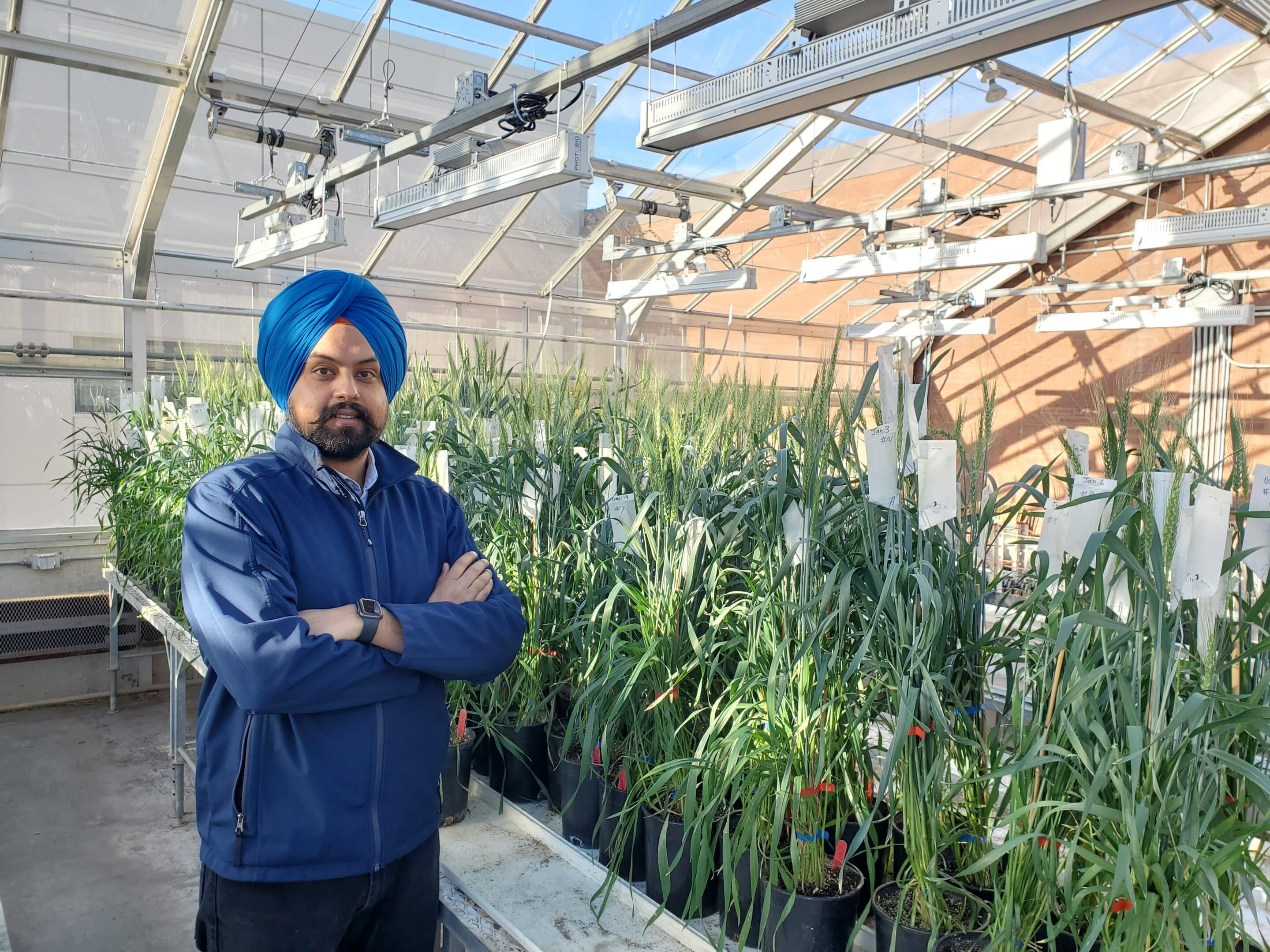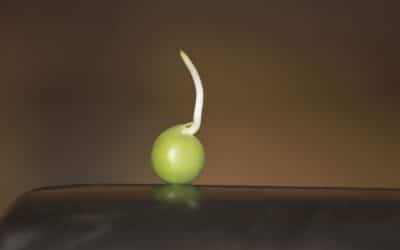Harwinder Sidhu, the new AAFC winter wheat breeder, didn’t always plan to become a plant breeder.
It wasn’t a straightforward path to plant breeding for Harwinder Sidhu. He started in his home country of India studying agricultural sciences for his undergraduate degree with a focus on soil science. From there Sidhu branched into horticulture, studying physiological stresses on plants for his masters in Georgia, U.S. Initially Sidhu had started his post doctorate studies in the United States focusing on plant pathology, but he left the program midway through it.
“When I came to Canada, I was looking at what I wanted to do in agriculture because I was still very interested in agricultural research and sciences — I thought plant breeding is the sweet spot,” Sidhu explains in a phone interview. “The specialization of soil science and understanding of physiological stress from my masters, and then the short stint in plant pathology, all could be applied in variety development.”
Sidhu started a PhD program at the University of Guelph studying plant breeding in 2015. He worked under winter wheat breeder Ali Navabi at the university. His research focused on identifying genomic regions to improve fusarium head blight resistance in winter wheat.
As his studies drew to a close Sidhu started looking for employment. It was 2021 and three provinces away Rob Graf, the winter wheat breeder at Agriculture and Agri-Food Canada (AAFC) Lethbridge, was starting to make his retirement plans. The timeline lined up just perfect and Sidhu found himself moving to Alberta to work under Graf with the plan for him to take over the winter wheat breeding program.
“I thought he was a very bright, motivated individual that was very willing to learn. Listen and learn and take on the objectives of the program as I had established them, and then add to them in the ways that he felt were most appropriate, and put his own stamp on the program,” Graf says in a phone interview.
The two worked side by side for a year and a half with Sidhu learning the ropes from Graf before Graf retired in the fall 2022. Sidhu discovered the transition ideal as he was able to pose any questions he had for Graf and Graf would explain the history of the program to him.
“Rob was really incredible in guiding me into the program and learning the nitty gritty of how things went and what to focus on,” Sidhu adds.
The plant breeding process is time consuming. It can take over a decade to create a variety from the initial cross being made to variety registration. Having someone to step in and continue the work Graf had started was crucial to ensure no variety currently being bred was forgotten about.
“It’s very important to have consistent objectives. If you change your objectives midstream the program is going to be far less productive than if you have a consistent approach. By being able to mentor Harwinder I think he got a good understanding of where I was going,” Graf says.
Coming into the job, Sidhu worked with Graf to finish off AAC Overdrive — the winter wheat variety was nearing the registration stage. AAC Overdrive matches check varieties for yield and other quality traits, and as of right now it’s the highest rated winter wheat variety in Western Canada for resistance to stem and stripe rust, and common bunt.
“I think that speaks to the kind of work that Rob did in the last two decades to improve the disease resistance in winter wheat. And that variety I’m sure will do really well when it is available to the farmers based on that particular trait,” Sidhu says.
Sidhu plans to continue with many of the same focuses for the program as Graf. Sidhu will still concentrate on improving yields and disease resistance of the winter wheat germplasm, along with improving the quality of winter wheat varieties. He plans to put his own mark on the program by improving heat and drought tolerance and adding some genomics tools into the program.
With climate change and the hot, dry conditions Western Canada has experienced over the past five years, Sidhu believes hot weather and less moisture availability will be a significant issue moving forward for farmers. He plans to slowly develop germplasm which will address these challenges in seed reproduction.
Sidhu sees his second goal of adding genomic tools as going hand in hand with his heat and drought tolerance work. One the tools that could assist in this could be using genomic selection processes to select desirable traits.
“Initially, it could be off some high costs. But I think long term, having the genomics tools added to the program will be really beneficial,” he adds.
Long term Sidhu would like to use phenomics tools to help improve winter wheat survival rates. Early adopters of phenomics are using drones and other tools to record data on how well plants are performing in fields.
“I think my approach (to running the program) will still include a mix of conventional breeding and every tool that we can utilize in breeding better winter wheat varieties,” Sidhu says.
Header photo — , winter wheat breeder at Agriculture and Agri-Food Canada Lethbridge
Related Articles
The First Cut the Deepest for Alberta Winter Wheat Agronomy Research





